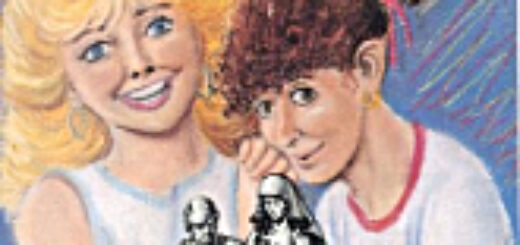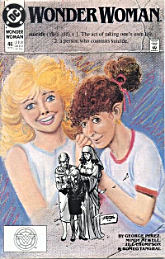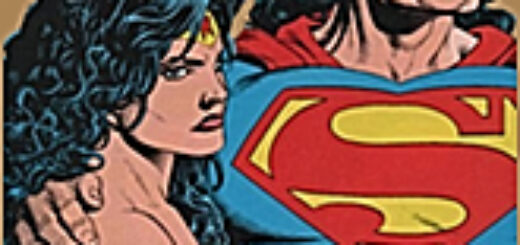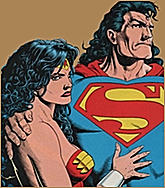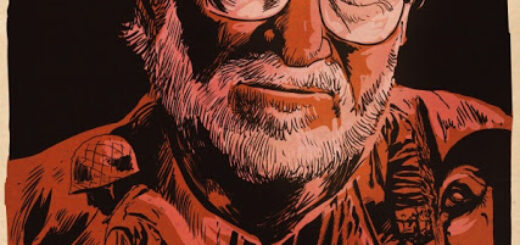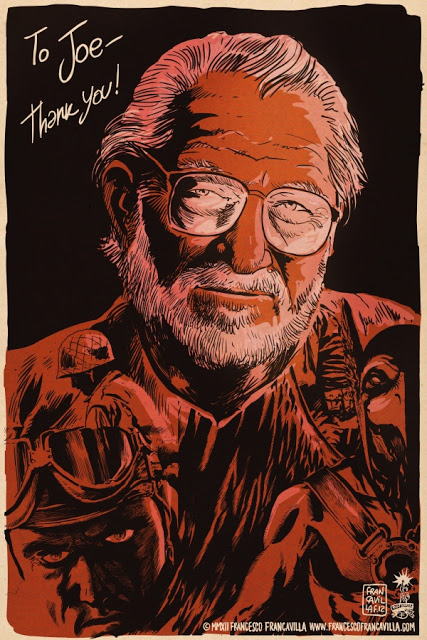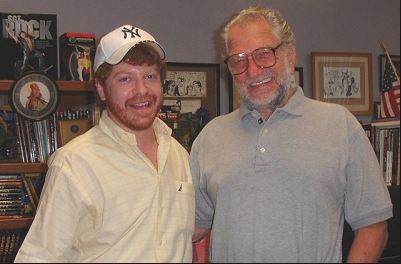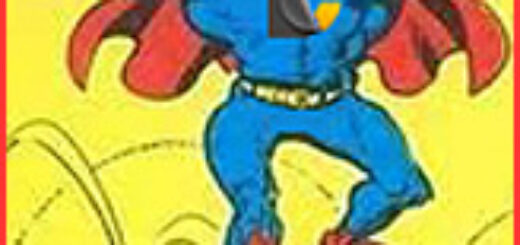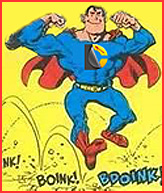Marc Alan Fishman: The New Breed of Con Goer
This past week, you’ve likely seen it: Denise Dorman, wife of “Famed Comic Book/Sci-Fi/Fantasy illustrator Dave Dorman,” decided to write an op-ed concerning the decline of sales she and her husband have been privy to over the last years. She has since posted a second response to make her points more clear.
Denise’s original piece began: “Privately, famed comic book industry personalities everywhere are discussing with each other whether to stop exhibiting at comic book conventions. There’s a fine line between being accessible to and pleasing the fans vs. losing money at these conventions.”
Unshaven Comics has been independently producing comic books and attending comic conventions regularly for only seven years or so. In no way, shape, or form do we come close to the level of fame and success her husband has enjoyed. But in the time that we have been active, I have never heard a single peep (and we in the Artist Alley tend to be a gossipy bunch to begin with) about this discussion. In fact, at the Cincinnati Comic Expo I attended this past weekend, with Mark Bagely, Marv Wolfman, George Pérez, Neal Adams, and Bob Layton I saw only smiling faces – even when lines weren’t incredibly overcrowded. And while I did hear from some folks around us that the show wasn’t bringing them tons of business, only our neighbors decided to cut ties early. And for those playing at home, Unshaven Comics beat our desired sales goal by over 25%.
At first, Bleeding Cool would have you believe that she blamed the Cosplayers. This is not true. In her second blog on the matter, Denise points blame to the “new breed of attendees who are there because someone said its cool to be there.”
To that point: Comic Conventions weren’t founded with the expressed concern of making creators money, they were ways to bring a community of fans together for the opportunity to commiserate, a way to trade and purchase issues to build budding collections, and meet those would-be creators who were the reason the conventions were created. These conventions were small – starting out in gymnasiums, VFW halls, and hotel ballrooms. This new breed (and those who specifically come to the new larger shows), per Denise, are hangers-on to the fad; those who come because they think it’s en vogue. Those who show up not being card-carrying comic book fans.
Her column went on to note as sales were simply non-existent at ole’ Wally World:
“…You know, you start to get paranoid. You start to think, ‘Is it only us? Is Dave no longer relevant?’ So I began covertly asking around. Asking artists equally in demand, equally famous. No one I interviewed made money at that show.” Ultimately Denise falls back on her assertion that it’s these quasi-fans that are most likely the culprit to her husband’s decline in sales specifically at conventions. Mrs. Dorman continued “I have slowly come to realize that in this selfie-obsessed, Instagram Era, cosplay is the new focus of these conventions – seeing and being seen, like some giant masquerade party. Conventions are no longer shows about commerce, product launches, and celebrating the people who created this genre in the first place.” She’s absolutely right. And may Rao bless that fact from here to the next Crisis.
Comic book conventions have become less and less about comic books. On this, I don’t disagree. In addition to comic books, they now encapsulate science fiction (like Doctor Who, Star Wars, and Star Trek), fantasy (like Lord of the Rings, and Harry Potter), and gaming (like Magic: the Gathering, and Warhammer). A cursory glance back at Mr. Dorman’s Wikipedia page celebrates that he has created artwork for Batman, Spider-Man, Harry Potter, Star Wars… and Magic: the Gathering. Curious then that he’s not connecting to the larger audiences coming to these shows. But I digress.
The point made was that the flux of cosplayers and their subsequent fans are now taking away from the open commerce, Marvel and DC press release parties, and the creator-gushing of yesteryear. You might say that the conventions are becoming more about a gathering of a like-minded community coming together to celebrate their loves and less about dropping ducats on merchandise from people who now can be accessed via a personal website, or any number of social medias.
What troubles me is this: My table of artists (including me) who aren’t in demand or famous saw an increase in book sales upwards of 10% at the show (over last year) Mrs. Dorman most recently attended. This included a day where we set a single day record for total books sold – 225 of them to be exact. How would it be then, that a table of peons would somehow out-earn those who are known in the industry? Did our nefarious plan of installing a toll booth actually work? Someone better go back and get a shit load of dimes!
Denise went on to ask: “At what point do you start to wonder if – other than your faithful, loyal regulars who are like family and who find you every time – the general fandom population even gives a shit about the creators more than they care about their Instagram profiles?”
Allow me to answer in kind. The general population – those Instagram-obsessed fans – gives more than just a shit for those creators who take the time to reach out and communicate. I say this admitting freely I’ve never seen Dave Dorman. And we’ve exhibited at the same shows more than once. I don’t know how specifically Dave exhibits. But if he is like others I’ve seen over the last seven years… he may sit, smiling, awaiting those loyal regulars to come with cash in hand. In short, it’s not enough anymore. It hasn’t been that way in a long time.
For those new fans Dave needs to continue to be the celebrated creator he is, I ask how he chooses to engage them? Having not been a specific fan of his work (and yes, he is actually an astounding talent), if I were to walk past him, would he attempt to stop me and chat? I’m not selfie-obsessed, but I’m also not apt to make it a chore to check with every exhibitor at a convention. Especially if there’s a cool cosplay I need to post a picture of. It’s no longer enough to rest on the laurels of a resume, or even the strength of a displayed portfolio. The market has evened out. All who exhibit are slowly becoming equals amongst the growing legions of fans flocking to the shows. And it’s clear to me, as it should be to all creators: If you’re not making money… it’s not the fault of the fans, or the rising ticket prices, or food costs. The blame doesn’t get to be shuffled anywhere else but on those who make no effort to change with the rolling tide.
The fact is that the newest generation of fans that frequent comic conventions are coming first and foremost to celebrate their love of the media. That love need not be via purchases in the digital era. A comic on my table is considerably less than a commission a known artist offers at their table. When one faces a sea of new faces (heh), the easy money is on the short sale – be that a celebrated or loathed fact. Never once in my time behind the table have I heard from legit fans (including those in every conceivable generation) that the cost of a ticket, a hot dog, or an autograph prevented them from purchasing a comic or print from my table. Cons are costly, I’m not denying that. But at the end of the day, the fans are coming on their own terms, not by the financial needs of those of us behind the table.
Mrs. Dorman’s original post ended “…at what point would YOU cut bait and stop attending these shows? How do we satisfy the fans in a way that makes sound financial $ense ? ? ?”
To be blunt, here are my answers: I won’t cut bait, ever. We earn our fans one at a time. I assess the marketplace. I exhibit within my means. I analyze my sales data. I adapt to a changing market. I work my ass off. And I don’t wait for fans to come discover me. I make them discover me. I don’t want to be an instigator, or one to throw a punch at an undeserving target. The truth of the matter is that the conventions of old are dwindling, if not dead. If Wizard and their ilk don’t offer comped tables to creators who are there to turn profit, then those creators must accept that the shows are now not there the fans’ need to connect to creators. For good or bad… They’re there to connect with each other. If you want that to change… It’s not about cutting ties or holding conventioneers responsible. It’s about getting your hands dirty and figuring out how to make the change yourself.









